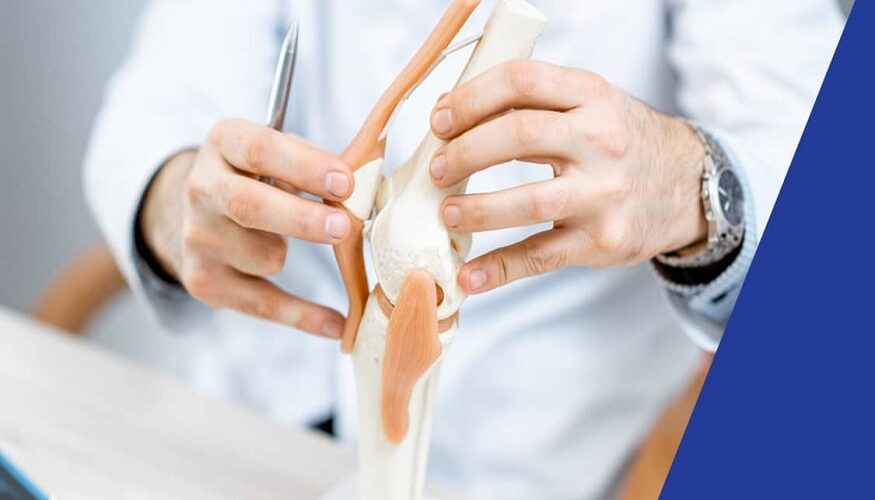In modern medicine, tissue transplantation has become an essential tool for repairing, reconstructing, and regenerating damaged tissues. Among the various options available, allografts—tissue grafts taken from a donor of the same species—play a vital role in both surgical and wound-healing applications. Unlike autografts, which are derived from the patient’s own body, allografts provide a readily available, biologically compatible alternative that reduces the need for additional surgery and associated recovery time. Understanding when allografts are necessary can help clinicians determine the best course of treatment for complex wounds, orthopedic injuries, and other tissue loss conditions.
What Are Allografts?
Allografts are tissues, such as skin, bone, tendons, or placental membranes, harvested from human donors and processed to ensure sterility, biocompatibility, and safety. Donor screening, tissue preparation, and sterilization follow rigorous standards set by regulatory bodies such as the U.S. Food and Drug Administration (FDA) and the American Association of Tissue Banks (AATB).
Because allografts are sourced from another human rather than synthetic materials, they retain many of the biological characteristics necessary for natural healing. They provide a matrix that supports cellular migration, angiogenesis (the formation of new blood vessels), and tissue regeneration without provoking a strong immune response. This makes them highly effective in complex cases where the body’s own tissues are insufficient for repair.
When Allografts Become Necessary
There are several clinical situations in which the use of allografts is not only beneficial but medically necessary. These scenarios typically involve large or deep wounds, tissue loss, or compromised vascular supply where traditional closure methods are inadequate.
1. Extensive Wound or Tissue Loss
When a wound is too large to close using sutures or primary closure techniques, an allograft provides essential coverage. This is particularly common in burn victims, traumatic injuries, or surgical wounds where significant skin or tissue has been lost. The graft serves as a biologic dressing that protects the wound, maintains moisture balance, and promotes re-epithelialization while minimizing infection risk.
In cases of severe burns, allografts act as a temporary or permanent skin substitute, protecting underlying structures until autologous skin grafting becomes feasible.
2. Chronic Non-Healing Wounds
Chronic wounds, such as diabetic foot ulcers, venous leg ulcers, or pressure ulcers, often remain stuck in the inflammatory stage of healing. Poor oxygenation, neuropathy, and reduced vascular supply can all contribute to slow or incomplete recovery. When conventional treatments such as dressings, debridement, and antibiotics fail, an allograft can provide the biological signals and structural support necessary to restart the healing process.
Allografts derived from human placental tissue are particularly effective in these cases. They contain growth factors, cytokines, and extracellular matrix proteins that promote angiogenesis, cell proliferation, and immune modulation, leading to faster and more complete wound closure.
3. Bone and Orthopedic Reconstruction
In orthopedic surgery, allografts are frequently used to replace or augment bone and connective tissue. Procedures such as spinal fusions, joint reconstructions, and fracture repairs often rely on bone allografts to restore structural integrity. These grafts can fill voids, serve as scaffolds for new bone formation, and reduce the need for harvesting autologous bone from the patient’s own body—a process that carries additional pain and risk of complications.
Cortical, cancellous, and demineralized bone matrix (DBM) allografts are selected based on the clinical need. They help accelerate bone healing by acting as osteoconductive, osteoinductive, or even osteogenic materials depending on the processing technique.
4. Vascular and Tendon Repair
When tendons or ligaments are irreparably damaged, such as in anterior cruciate ligament (ACL) reconstruction or rotator cuff repair, tendon allografts may be used to restore mechanical function. These grafts provide structural support and integrate gradually with the patient’s own tissue, allowing for improved joint stability and mobility.
Similarly, in vascular surgery, allografts can replace or reinforce damaged blood vessels when autologous options are unavailable or unsuitable. The biocompatibility of human-derived grafts helps minimize thrombosis and immune rejection compared to synthetic substitutes.
5. Post-Surgical Wound Complications
In some surgical cases, particularly those involving poor circulation, infection, or radiation damage, wounds may fail to close properly. Allografts can be applied to support granulation tissue formation and epithelial migration, ultimately enhancing closure rates. Patients who have undergone oncologic surgery, reconstructive procedures, or amputation are often prime candidates for this therapy.
6. When Autografts Are Not Feasible
There are many situations in which using a patient’s own tissue for grafting is not practical or safe. Patients who are medically unstable, have insufficient donor tissue, or are at risk of delayed healing may not tolerate the additional surgical stress of autograft harvesting. Allografts eliminate the need for a secondary donor site, reducing surgical time, pain, and postoperative morbidity.
The Biological Advantages of Allografts
Allografts provide more than just a structural replacement—they deliver biological signals that actively facilitate healing. Many processed allografts retain components such as collagen, elastin, and glycoproteins that support cellular adhesion and migration. Some, like placental or amniotic allografts, contain anti-inflammatory molecules and growth factors that help transition the wound from a chronic inflammatory state to active regeneration.
Moreover, allografts are known for their low immunogenicity, meaning they rarely trigger immune rejection. This property arises from the removal of cellular material during processing, leaving behind a biologically inert matrix that encourages host cell colonization and integration.
Safety and Regulation
Modern tissue banking and graft processing ensure that allografts are among the safest biologic materials used in medicine today. All donor tissues are screened for infectious diseases such as HIV, hepatitis B and C, and syphilis. Processing techniques like cryopreservation, dehydration, and sterilization maintain biological integrity while eliminating potential contaminants.
The use of allografts is guided by strict medical standards, and clinicians are trained to match graft type and application method to the specific needs of the patient. Post-application monitoring ensures integration and healing while minimizing the risk of complications.
Conclusion
Allografts are an indispensable component of regenerative medicine, bridging the gap between natural healing and surgical intervention. They provide a safe, biologically active scaffold that encourages the body to rebuild lost or damaged tissue. Whether used in chronic wounds, bone reconstruction, tendon repair, or large skin injuries, allografts offer both structural and biochemical support that enhances recovery.
When autografts or synthetic substitutes are not viable options, allografts stand out as a clinically proven and life-saving alternative. Their versatility, biocompatibility, and regenerative properties make them a cornerstone of advanced medical care—helping patients heal faster, more effectively, and with fewer complications.

